Best women's hiking boots 2025: sturdy footwear for tackling the great outdoors
We rank the best women's hiking boots, for comfort, value, robustness and style

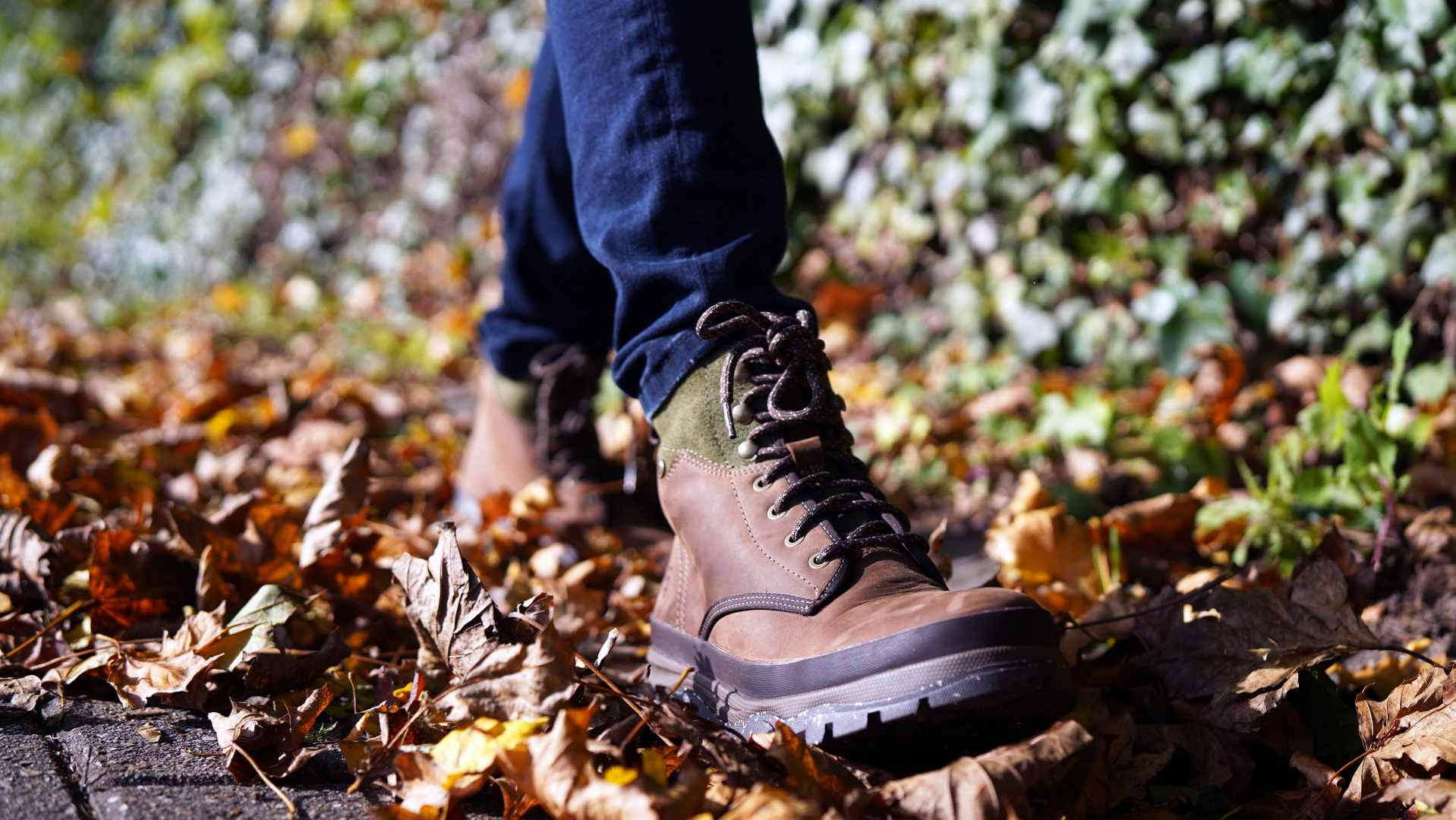
If you’re looking to put your best foot forward whilst hitting the trails, you’ve come to the right place, as we’ve rounded up our top picks of the best hiking boots for women. Whether you're navigating rocky paths or trudging through muddy trails, a good pair of hiking boots is essential to provide your feet (and ankles) with the right support and comfort.
We chose the Danner Mountain 600 as the best hiking boot for women. They’re waterproof, have excellent traction and, thanks to their slightly wider design, will fit most foot types and don’t require a break-in period. For a more modern look, try Terrex's WMN Mid rain.RDY, is ideal for extended use on not-so-technical trails.
If you’re looking for something that’s a little lighter and offers more flexibility for everyday use, then check out our best women's walking shoes. Also, gentlemen don't fret, we've got a separate guide for the best hiking boots with men's and unisex options.
Without further ado, here’s our pick of the best women’s hiking boots
The top three

The Danner Mountain 600 is a stylish, lightweight hiking boot that offers the comfort and aesthetics of heritage footwear. Although its insulation isn't the best, it features waterproofing, excellent traction, and durability, making it ideal for outdoor activities.
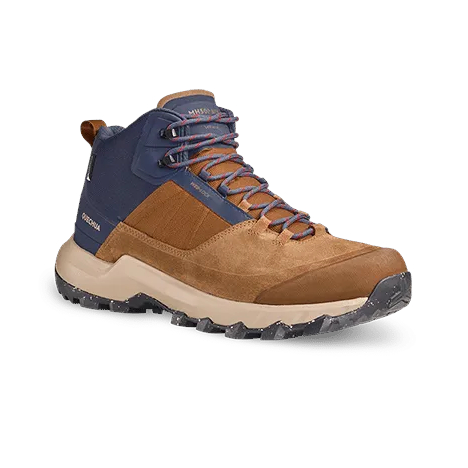
These are a comfortable and affordable option for beginner to intermediate hikers. They feature a waterproof and breathable membrane, strong grip outsole, and EVA cushioning for shock absorption. They provide a secure fit and excellent support for various terrains.
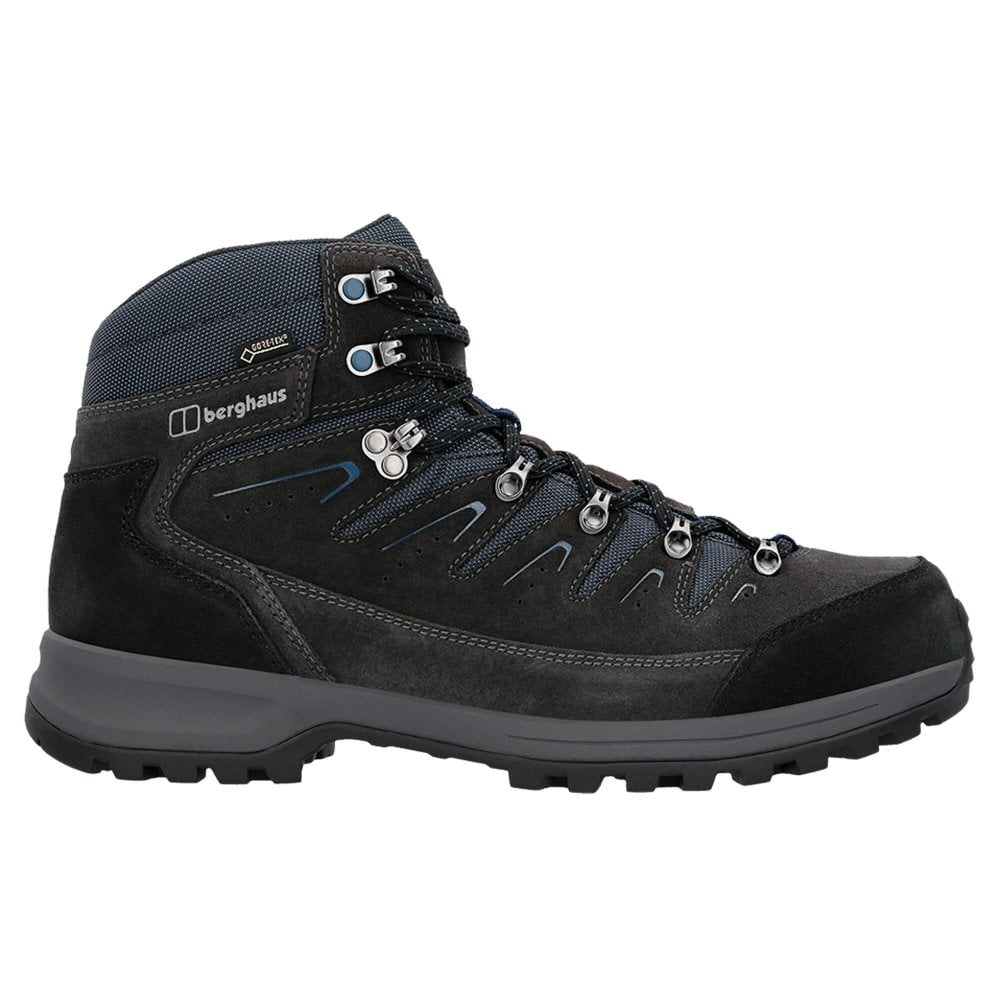
These durable Berghaus boots are perfectly waterproof and have excellent grip, thanks to Vibram soles. Ideal for varied terrain and wet conditions, they offer solid support but are less breathable due to their suede material. Comfortable from the first wear, they are perfect for autumn to spring hikes.
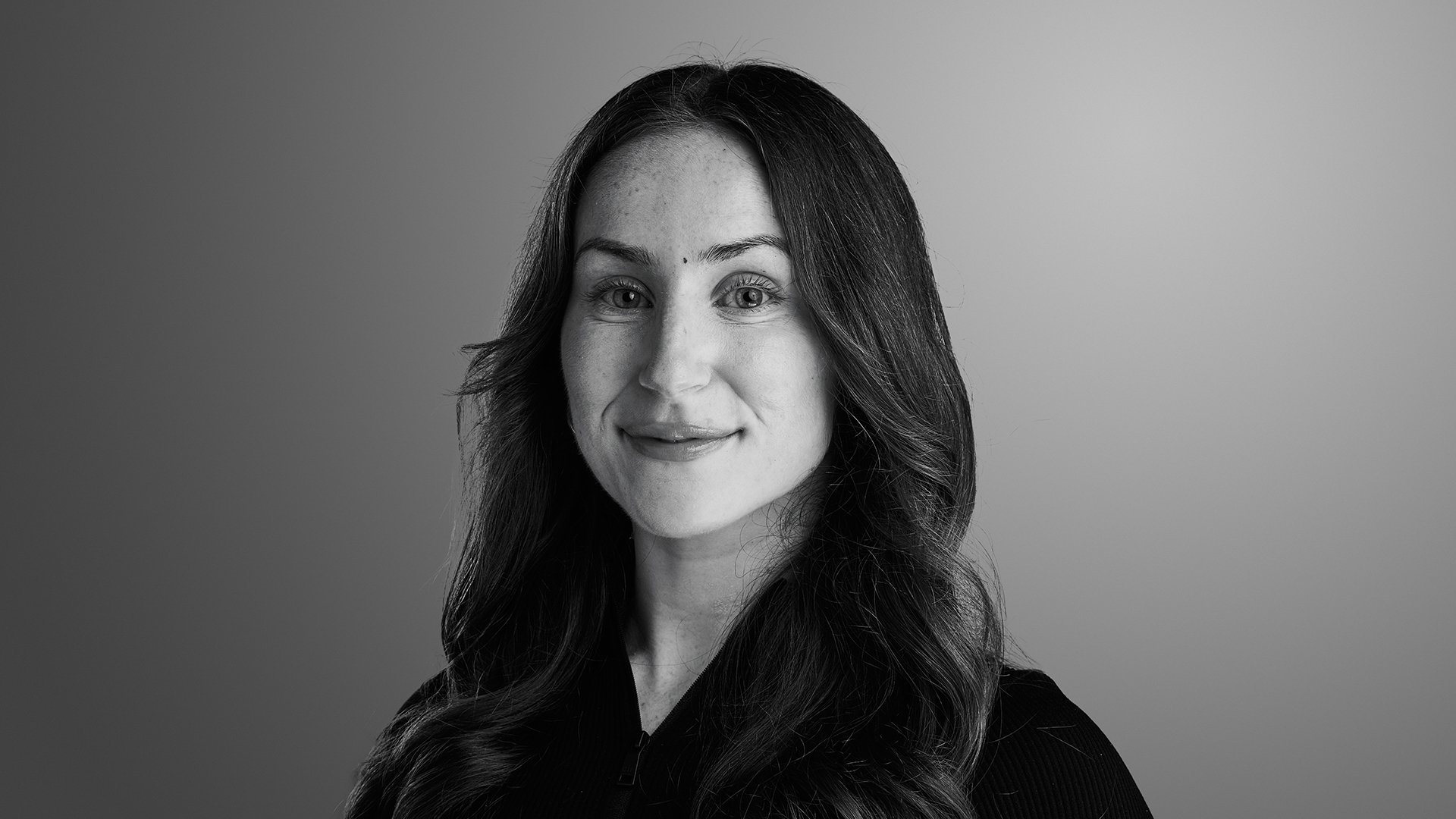
Bryony is the Active Writer for T3, covering outdoor, fitness, and wearable content. Raised in the Cotswolds and camping since the age of two, she has always had a fond appreciation for the great outdoors. She’s a keen walker, and loves seeking out new hidden gems or hiking well-known routes, like Pen Y Fan or the Cat’s Back. She’s always ready to seek new ways to deepen her connection with the wilderness through testing the latest outdoor gear.
Best women's hiking boots to buy right now
Best overall

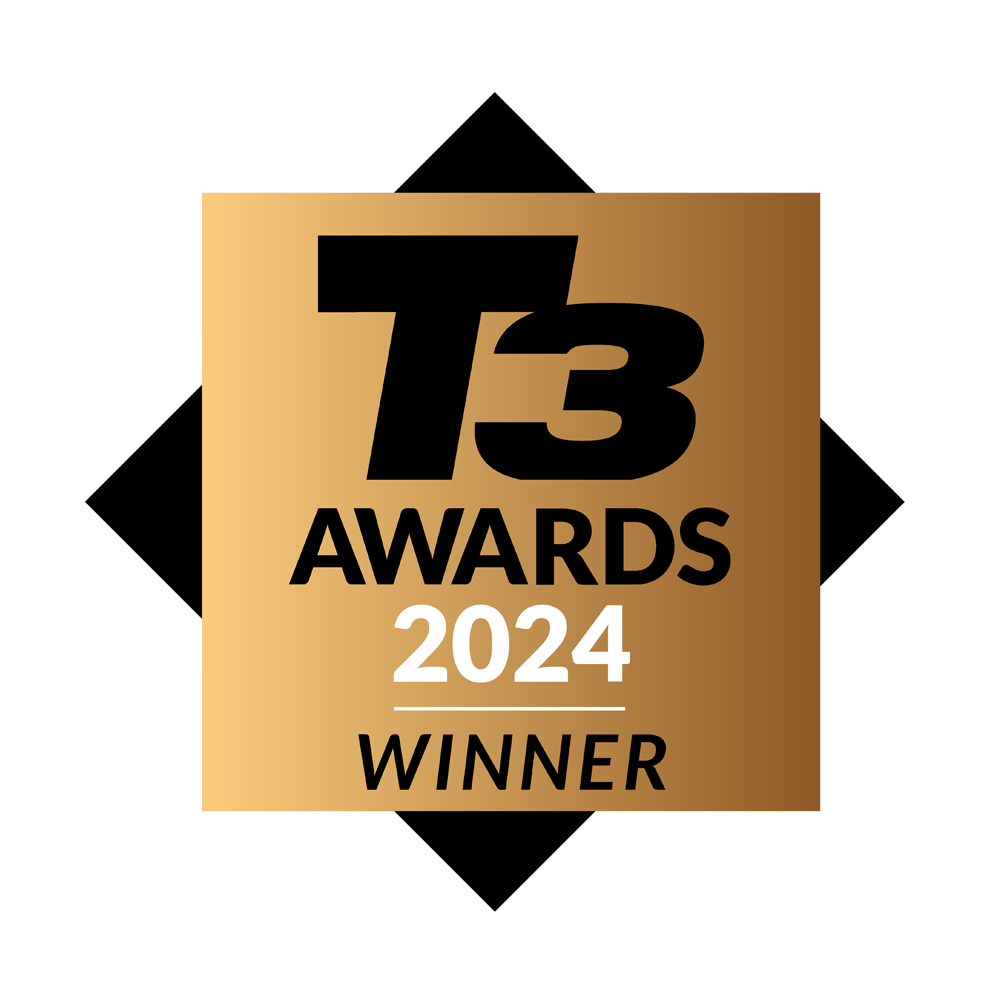
1. Danner Mountain 600
Specifications
Reasons to buy
Reasons to avoid
The Danner Mountain 600 hiking boots live up to their heritage with a modern twist, offering durability, performance, and style.
During a three-day trek in Scotland's Loch Lomond, these boots proved to be both comfortable and waterproof, keeping the feet dry even after hours of wear. Made from soft leather with a waterproof lining, they feature a Vibram Megagrip outsole for excellent traction on various terrains. The self-adapting diamond-shaped lugs ensure flexibility and stability, while the Vibram SPE midsole provides lightweight durability.
Contrary to Danner's recommendation, we found the boots to be true to size, making them suitable for wider feet. Despite their rugged appearance, they are surprisingly lightweight and require no breaking in. During hikes, they offer superb traction and support, even on steep and muddy trails. The waterproof feature shines through in challenging conditions, keeping the feet dry and comfortable throughout the hike.
While breathability is adequate, especially when paired with hiking socks, the boots may feel warmer in the summer due to the leather material. The only downside was the length of the laces, easily remedied with a simple knot. Overall, the Danner Mountain 600 boots impressed us with their comfort, traction, and waterproof capabilities, making them a solid investment for serious outdoor enthusiasts.
Read our full Danner Mountain 600 review
Most affordable

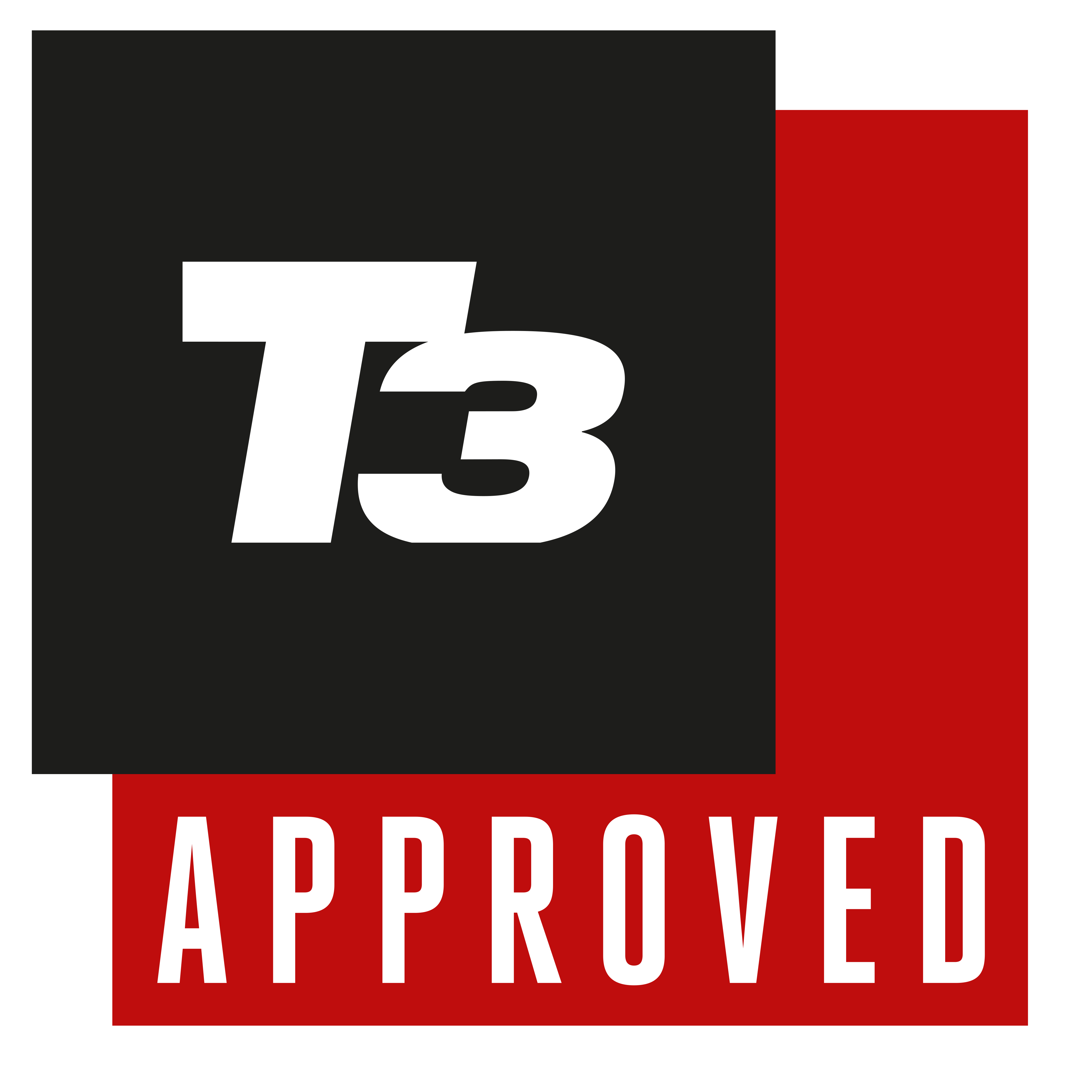
2. Quechua Women's Waterproof walking Boots MH500 MID
Specifications
Reasons to buy
Reasons to avoid
If you're on a tight budget, the best cheap women's hiking boots we've found are the Quecha Waterproof walking Boots MH500 MID. For an astonishingly low price, you get a waterproof membrane to keep feet dry in inclement weather, a double cushioned sole with 'EVOFIT' that's designed to adapt to your foot shape, and a blend of synthetic and leather upper. We haven't been able to personally test these out, but they come extremely well reviewed, with an average of 4.4/5 over 4,600+ reviews at time of writing. It makes sense, as Quecha – the in-house brand from Decathlon – is known for producing outdoor kit that's low in price but high in value.
Of the complaints, some said they had issues with the waterproofing, and others with the breathability. These walking boots might not have all the whistles and bells that pricier choices do, and if you can afford it, we'd always recommend shelling out more for a pair of boots that'll last the years. But if you're on a budget and are looking for a basic option for muddy forest walks and Saturday rambles, these are a great choice.
Most stylish

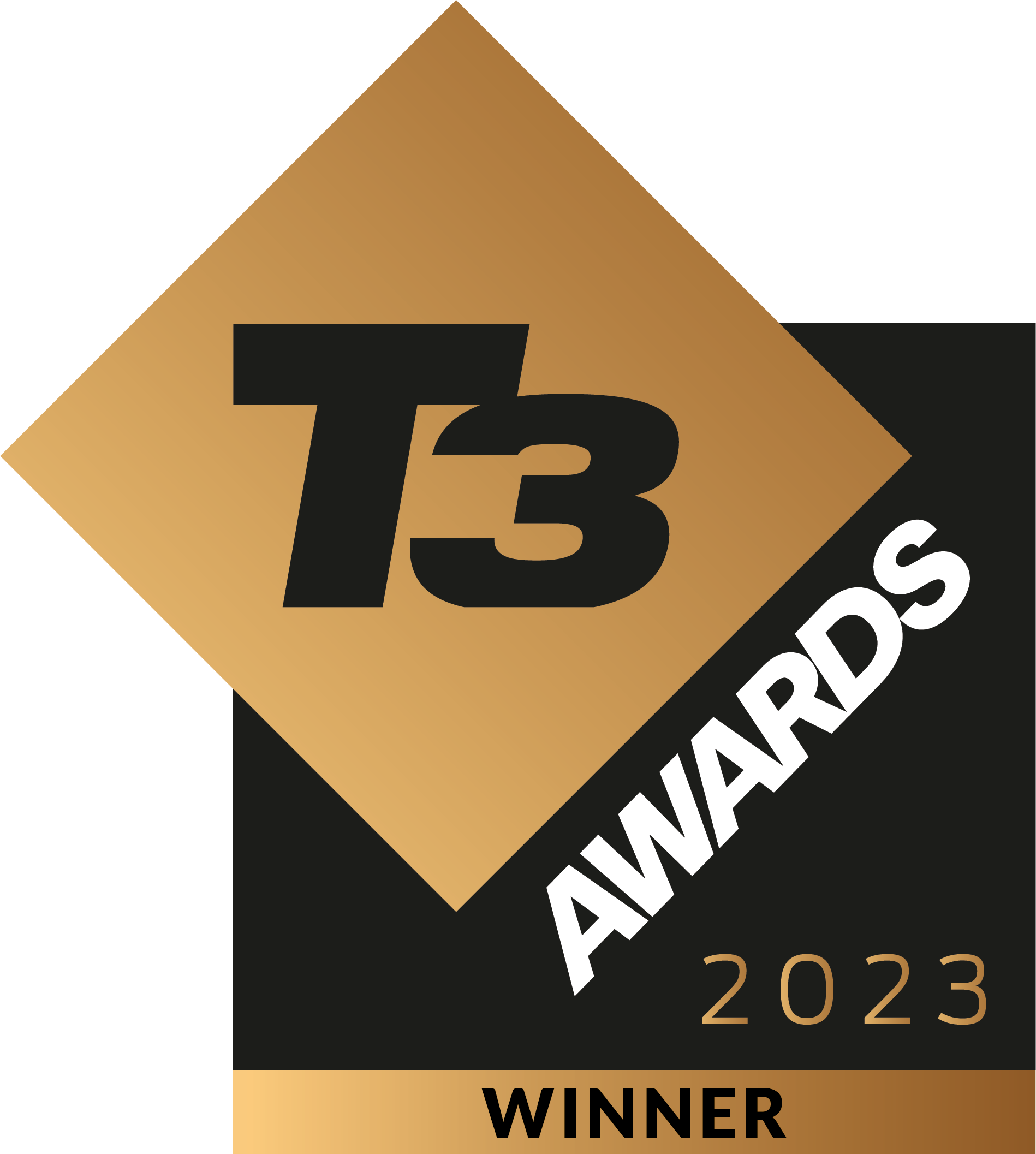
Specifications
Reasons to buy
Reasons to avoid
We were thrilled with the Adidas Terrex WMN Mid rain.RDY Hiking Shoes during testing. They're stylish, comfortable and supportive, and we felt feminine in them whilst hiking. The slip-sliding in the mud was the only downside, but generally, the shoes were supportive and worked well on different surfaces during testing.
We also enjoyed wearing them for long beach walks and found them very comfortable for extended lengths of time without our feet feeling too hot. The Adidas Terrex WMN Mid rain.RDY Hiking Shoes will be excellent additions to anyone walking wardrobe. It feels like a breath of fresh air in terms of design and comfort, and unless you need extremely technical hiking footwear, you'll love them, too.
Read our full Adidas Terrex WMN Mid rain.RDY Hiking Shoes review.
Best for cold feet


Specifications
Reasons to buy
Reasons to avoid
There is no doubt that the Ariat Moresby is an excellent, versatile women's hiking boot. Thanks to its waterproof, well-insulated construction, it makes an excellent investment for any outdoor person who works outdoors or wants a stylish boot that keeps them dry through the winter.
What we like the most about this boot is that it doesn't look like a typical bulky walking boot, which was the only type of boot you used to be able to get. Ariat has really thought about its consumers and what they want in a boot.
Sporting a durable construction, pretty design, comfort and excellent traction, this boot is a perfect all-rounder for your wardrobe. There is no need to hibernate during the winter any more, thanks to Ariat Moresby!
Read our full Ariat Moresby Waterproof Boot review.
Best for rugged terrain

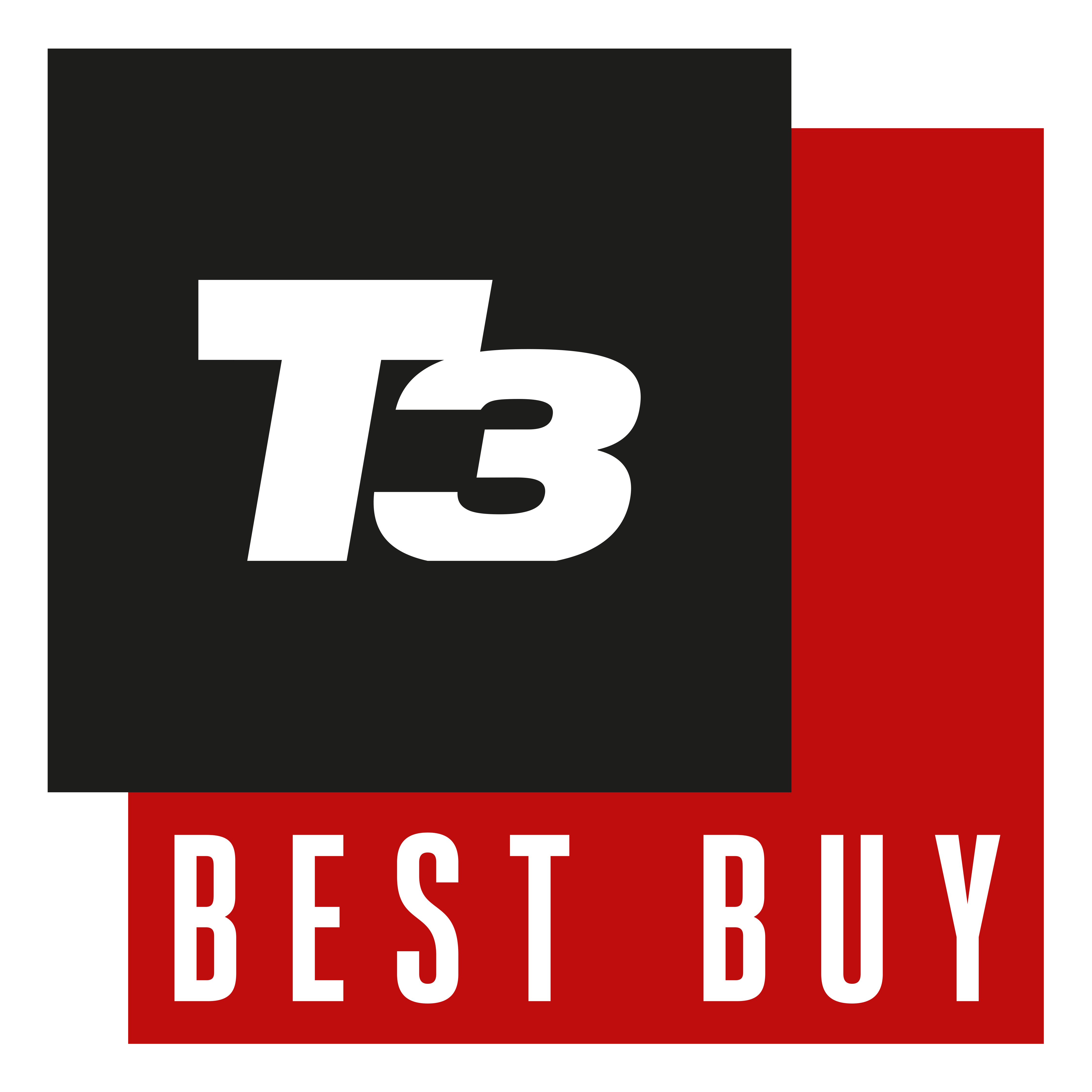
Specifications
Reasons to buy
Reasons to avoid
This outstanding all-rounder has a comfortable suede upper and a sturdy, versatile design. There's a Gore-Tex liner that'll keep your toes dry even in the worst weather, and the Vibram soles deliver really excellent grip on a variety of terrain. Any potential downsides to be aware of? In our review, we noted it fits relatively narrow. If you have wide feet, the Lowa Renegade below comes in a range of widths. And if you just want something for hot weather, you might be better with one of the lighter-weight options in our ranking.
Read our full Berghaus Explorer Trek review.
To make sure you're not missing an extra discount, check our Berghaus discount codes page.
Best waterproof
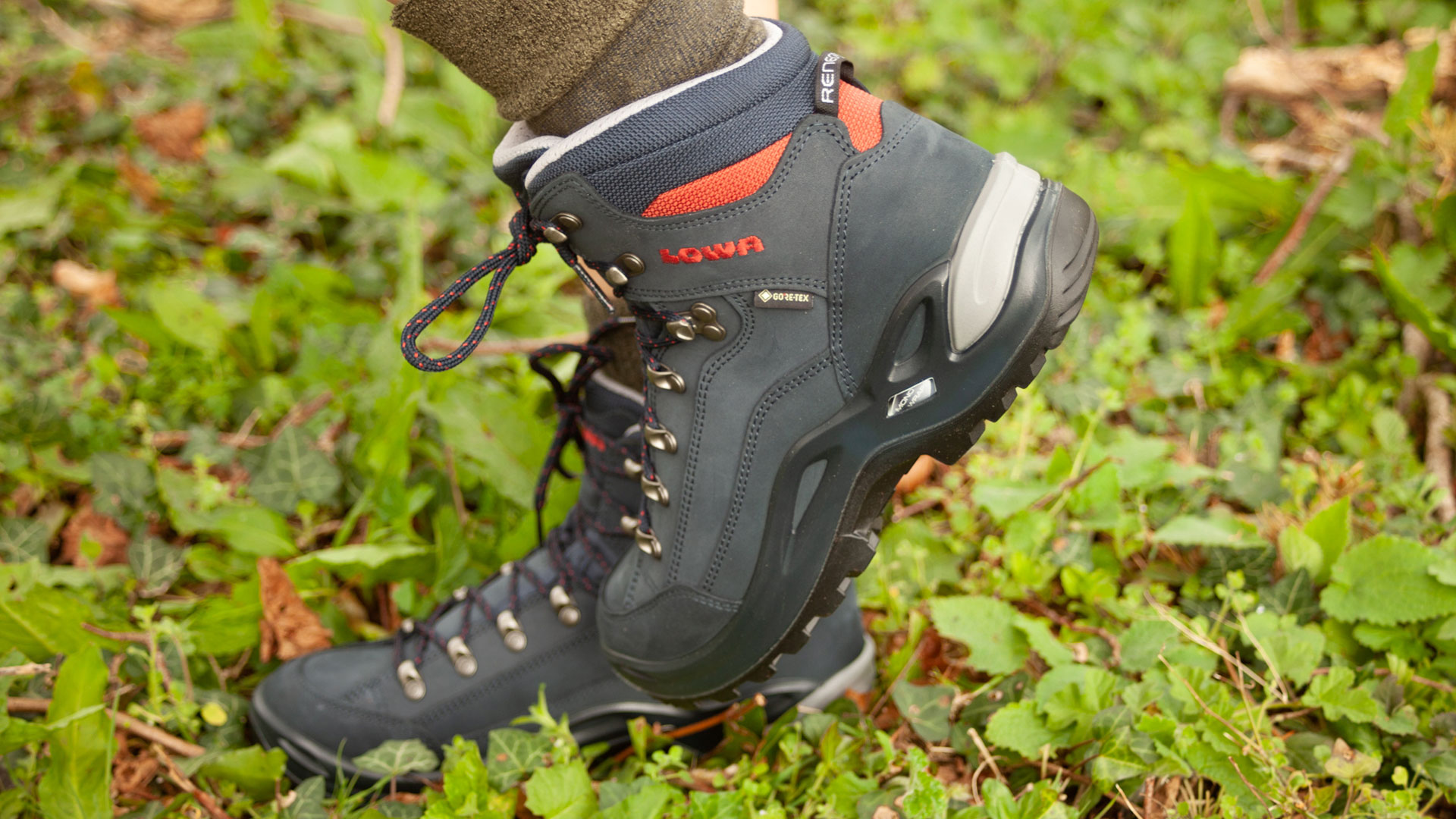

Specifications
Reasons to buy
Reasons to avoid
The Lowa Renegade GTX Mid and it's easy to see why – it ticks a whole load of boxes, delivering reliable waterproofing, excellent grip and a supportive cut. They're available in narrow and wide widths (as well as regular) and in half-sizes, too, so you've got a maximum chance of finding the perfect fit for you. The upper is made from leather, but unlike most leather boots, we found these comfortable to wear straight out of the box, with minimal breaking in time.
Otherwise, you're getting all the usual pros and cons of opting for a leather boot – the Renegades are very durable but require a little more care than a fabric boot would. They're also less breathable and heavier than many of the summerweight options on this list – so if you're after something mainly for warm weather rambles, you could look elsewhere. But if it's a durable, sturdy and reliable women's boot you're after, the Lowa Renegade GTX mid won't let you down.
Read our full Lowa Renegade GTX review.
Most comfortable


7. Timberland Garrison Trail Hiker
Specifications
Reasons to buy
Reasons to avoid
Next up in our ranking of the best women's walking boots is the Timberland Garrison Trail Hiker. These score highly in both the comfort and style stakes. The pair we tested delivered a secure fit around the feet, with easy adjustment via the laces. There's plenty of padding and insulation, the compression-moulded EVA-blend foam midsole is supportive and cushioning underfoot, and the design is flexible and relatively lightweight, for comfort straight out of the box.
The design isn't overtly outdoorsy – the Timberland Garrison Trail Hikers won't stick out for casual walks around the city, and we especially like the current colour combos. That's not to say there aren't plenty of features that are geared towards 'proper' hikes too: a toe bumper and heel piece made from climbing rubber, a gusseted tongue to keep debris out and a grippy outsole for traction on a range of terrain. There's no GORE-TEX here, but the proprietary TimberDry waterproofing kept out water reliably well in our tests.
This boot also shines when it comes to sustainability – the leather parts come from a sustainable tannery, and both the fabric lining and waterproof membrane are made with minimum 50% recycled plastic. While there are more specialist options in our ranking, if you're after a versatile all rounder that can tackle a variety of terrain, you won't go far wrong with these.
Best lightweight
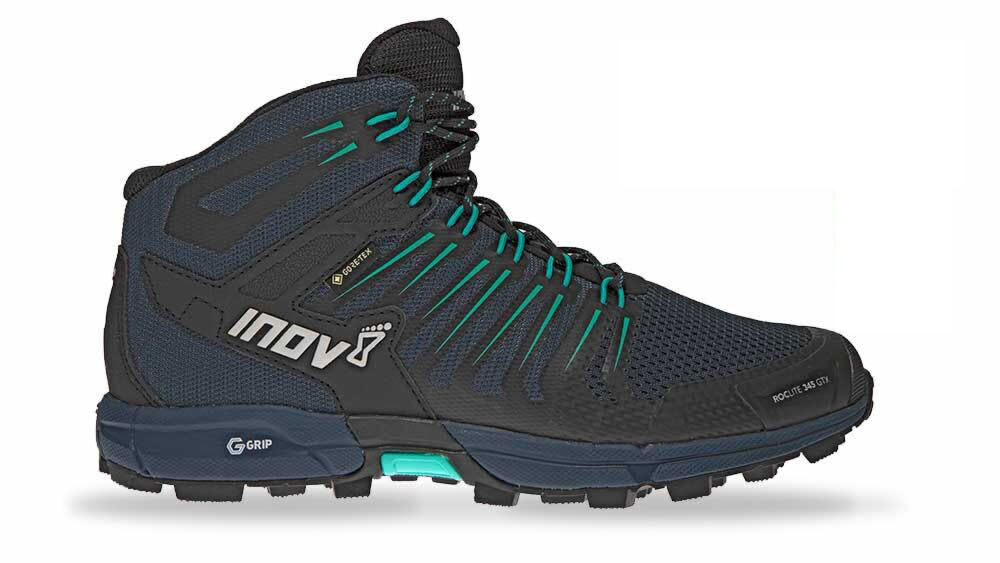

Specifications
Reasons to buy
Reasons to avoid
The super-lightweight Inov-8 Roclite G 345 trail boot is a pleasure to wear, and will enable you to tackle any trail in double-quick time. The main attraction with Inov-8’s latest trail boots is the graphene-infused rubber grip, known as G-GRIP. Graphene is the strongest material on earth – 200 times stronger than steel yet only one atom thick – so you can imagine the technical prowess it lends to these boots.
These are still impressively lightweight (just 345g at size 8.5), and a Gore-Tex liner keeps your feet dry. A Powerflow midsole promises better shock absorption and energy return than a standard midsole, which will help prevent fatigue, and keep you moving fast and light. Finally, the bellows-style tongue keeps stones and dust out of your boots, and the low-heel cut strikes the perfect balance of range of movement and support.
Read our full Inov-8 Roclite G 345 hiking boot review.
Best ankle support

Specifications
Reasons to buy
Reasons to avoid
They've been around a while, but the Scarpa R-Evo GTX WMN are still an excellent choice. These women's boots offer ample support and comfort for a remarkably low weight compared to the other fell and hill walking boots (although they're not the absolute lightest), and are the best-fitting and most comfortable walking boots we've tried in a long while. They mould well to the foot, with great instep support and security at the heel to eliminate heel lift. The high cut around the ankle provides great support without feeling bulky or awkward.
A chunky Vibram sole helps absorb impact, and decent tread provides grip in muddy conditions. It's a quality design that should last several years anyway, but these boots can also be resolved, extending their life even further. All in all, we were very impressed with these boots. The construction, support and ruggedness should see you through your backpacking, camping or hill-walking expedition in style and comfort, whatever the weather.
Read our full Scarpa R-Evo GTX hiking boots review.
How to choose the best women's hiking boots for you
Boots are one piece of kit that it's really worth investing in. Your feet bear the brunt of a long days' walk, and ill-fitting or substandard boots can result in injury, achy feet, and even the best hiking socks won't protect you from the dreaded blisters. So while budget is important, this is one area where spending more will mean you get a better quality walking boot, with features that will make the whole experience more comfortable and therefore more fun – like waterproof membranes, shock-absorbing soles, breathable fabrics and supportive insoles.
There are a few key elements it's worth paying attention to before you make your final selection. First up, the sole. A boot with a stiff sole and a reinforced mid-section provides good support for steep climbs and rough terrain, while a more flexible sole particularly towards the toe is better for less challenging terrain or fast and light hikes. A deep, chunky tread on the sole will help get good traction on slippery, wet or muddy ground, and some brands incorporate specific types of rubber designed to give extra grip in certain conditions, for example on rocks.
Next, the upper. Boot uppers can be cut high or low on the ankle. High cut boots provide plenty of support for the ankle joint, which can be useful if you'll be moving over steep or rough terrain or if you have an existing ankle injury, whereas low cut boots allow greater flexibility of movement.
The outer part of the upper can be constructed from leather, suede, synthetic materials or a combination of all three. For example, 'classic' walking boots were and still are often constructed from leather, which is naturally waterproof when treated regularly with wax or other products. Modern boots often use synthetic materials which can provide breathable or insulating properties without adding to the weight of the boot.
Most walking boots will have some form of waterproof membrane incorporated into the outer liner, the most common being GORE-TEX. Finally, the vast majority of walking boots do up with the classic bootlace, a system that's hard to beat and easy to fix.
FAQ
How do I find the right size of walking boot?
When ordering online, there are a few tricks to getting the right size boot the first time. Start off by using the manufacturer's sizing guide. Most boots allow room for the hiking socks you'll be wearing but do check out any notes or reviews on how they size up in real life, as some come out smaller or larger in practice (the boots we tested here sized up true unless otherwise stated). Most retailers will take returns so long as the boot hasn't been worn outside. If you're trying a boot on, do it at the end of the day when you're feet are already tired and naturally a little swollen from use, as that will give you a better indication of fit after a long day on the trails.
You're looking for a fit that's snug but not tight, supportive around the mid-foot, with no obvious pinching or rubbing. When walking on the flat, climbing and descending, your heel should stay in place and not move up and down inside the boot, as that could lead to blisters. The toes should have a little wiggle room, but not enough that the foot moves around within the boot. Once you've found the perfect pair, head to our guide on how to break in hiking boots and, of course, how to care for hiking boots, so they last for years.
Which type of ladies' hiking boots do you need?
There are dozens of outdoor brands out there, and most offer many different types of walking boot. So where do you start? One of the most important factors to consider when it comes to choosing the best boot for you is the environment and terrain you'll be using it in.
For general countryside walking, lowland hills and rambling, a lightweight boot with a flexible sole and good grip would be ideal. These will see you through walks of a few hours on moderate terrain. If you'll be walking on rough ground or tackling steep, long climbs, then you'll want boots that have a stiffer sole and more ankle support. These boots often need to be 'broken in' before they really start to feel comfortable, which just means it gives the boot a chance to stretch and form around your foot. Make sure you leave time to do this before heading off on any big walks, as it often isn't a comfortable process! This type of boot is the one to go for if you're heading into the mountains, carrying a heavy hiking backpack, or going on a multi-day or hut-to-hut walking trip.
There's also the option of walking shoes, which have some of the same features as hiking boots but without the ankle support. They're popular for shorter distances and less rugged terrain, for where speed and flexibility are the priority or for those looking for a shoe for all-round use on and off the trail. We have separate recommendations for the best women's walking shoes and the best men's walking shoes – or if you're still not sure which is best for you, check out our walking boots vs walking shoes guide.
What are the main parts of women's hiking boots?
Uppers: this is the uppermost part of the boot that protects your foot. The best women’s hiking boots feature waterproof uppers, or at the very least water-repellent ones, and they’re highly breathable too. This keeps sweat and other moisture to a minimum, so your feet don't get all clammy in your hiking socks.
Uppers come in a range of materials, from full-grain leather to synthetics such as polyester and nylon. Generally speaking, the heavier the material (like leather), the heavier the boot. The specific material used for uppers also has an impact on breathability and water resistance.
Midsoles: these provide cushioning for your feet and determine the boot’s stiffness. When choosing women’s hiking boots for longer hikes over tougher terrain, stiffer boots can deliver enhanced comfort and stability.
Common materials for midsoles include EVA, for improved cushioning, and polyurethane, for increased stiffness and durability. EVA is often found in entry-level women’s hiking boots, as it’s cheaper, with polyurethane finding its way into the more pro-level models.
Outsoles: there to absorb and redirect shocks from the impact of your foot on the ground. Again, look through our women’s hiking boots list and you will see that rubber is a common material for outsoles.
Other important factors when it comes to outsoles are the lug pattern – those little bumps on the sole that aid better traction (grip) – and the heel brake, there to reduce the chances of your slipping on the trail.
Crampon connections: this is an important consideration to make if you’re planning on buying hiking boots for use during mountaineering or snow and ice-laden hiking. Why? Crampons are attached to the bottom of compatible boots to increase grip on ice and snow.
Get all the latest news, reviews, deals and buying guides on gorgeous tech, home and active products from the T3 experts

Bryony’s T3’s official ‘gym-bunny’ and Active Staff Writer, covering all things fitness. She is a certified personal trainer and also a part-time fitness instructor. In her spare time, you will find her in her natural habitat - the gym - where her style of training is a hybrid of bodybuilding and powerlifting. Bryony loves writing about accessible workouts, nutrition and testing innovative fitness products that help you reach your fitness goals and take your training to the next level.
- Sian Lewis
- Sophie HiggsFreelance Writer
- Ruth Hamilton